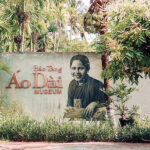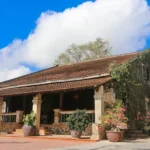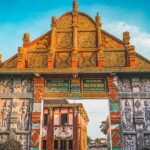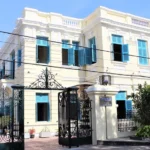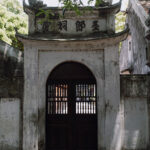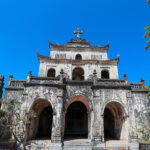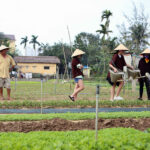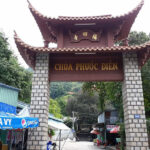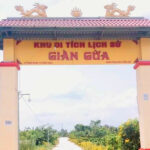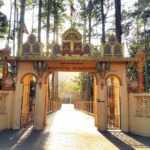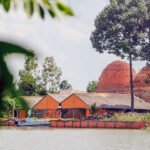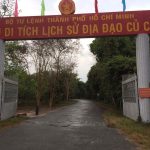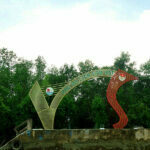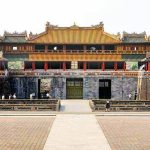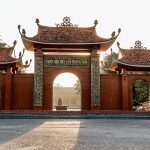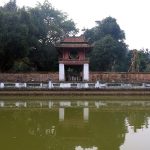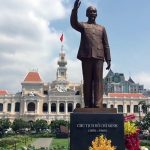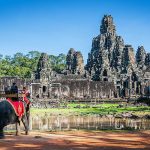The Vietnamese Women’s Museum has a diverse and modern design style. This place displays a large number of documents and artifacts to honor the development, role and position of women in Vietnamese society. If you plan to travel to Hanoi, this is a destination that should not be missed.
General information about Vietnamese Women’s Museum
Address: 36 Ly Thuong Kiet, Hoan Kiem District, Hanoi
Opening hours: 8am – 17pm daily
The Vietnamese Women’s Museum is located on one of the most beautiful streets in Hanoi, where visitors visit to learn about the role and importance of Vietnamese women in the flow of culture and history of country. The museum was began construction in 1991 and opened officially to the public in 1995 with the aims to preserve historical documents and artifacts to educate future generations. The founder of the museum is Madam Nguyen Thi Dinh, former Deputy Chairwoman of the Council of State, and former Chairwomen of the Vietnam Women’s Union.

Currently, this museum in Hanoi is preserving valuable documents and content, displayed scientifically and impressively, about the stories of women from all over the world, their contributions and silent sacrifices that are very profound. The beauty of Vietnamese women in the past, present and future.
The Vietnamese Women’s Museum has received the prize “Vietnamese Women 2015” and one of the top destinations in Vietnam in 2015 and 2016 from Vietnam’s Ministry of Culture, Sports, and Tourism.

Ticket price to the Vietnamese Women’s Museum:
- Adults: 40,000 VND/trip
- Children/students: 10,000 VND/trip
- Students/Members of the Vietnam Women’s Union: 20,000 VND/visit
You can buy tickets at the main entrance on the first floor or order tickets online on the museum’s website.
Note: The ticket prices for the Vietnamese Women’s Museum above are for reference only. Prices may vary depending on tour time or accompanying services and events…
Explore the Vietnamese Women’s Museum
The Vietnamese Women’s Museum has an area of nearly 5,000 square meters and has undergone many renovations and upgrades to create a modern and impressive space. The museum consists of 2 main buildings and a restaurant and coffee area. The main building is divided into 4 floors, each floor displays artifacts according to different themes.

The museum owns a collection of about 40,000 documents and artifacts related to Vietnamese women. In addition to permanent exhibitions, the museum also organizes many thematic exhibitions using new approaches to fully reflect the development and changes of contemporary society. These projects target many different audiences, especially women and children.
By exploring Vietnamese Women’s Museum, tourist can admire three main permanent exhibitions: Women in Family; Women in History; and Women’s Fashion as well as other temporary exhibitions.
First Floor – Souvenir shop imbued with Vietnamese culture and people
The first floor of the Vietnamese Women’s Museum is like a souvenir shop, where you can find a variety of museum-specific products such as postcards, bookmarks along with many other documents including pictures and books, newspapers and the museum’s successful thematic exhibitions.

These products are great souvenirs for you to give to friends, relatives or as keepsakes for yourself. All of these products are very convenient and carefully selected from reliable sources, especially handmade products made by economic development groups for ethnic women and disadvantaged women to perform.
Second Floor – Life journey of Vietnamese women
In this space, we will explore the life story of Vietnamese women: from the first steps in marriage, fulfilling motherhood to the important role of a wife who knows how to organize her family life of many different ethnicities. Traditional values will be recreated through customs, rituals, knowledge and folk experiences in marriage.

Wedding dress of Red Dao – one of the minority group in Vietnam
The traditional wedding rituals of Vietnamese ethnic groups in both matriarchal and patriarchal societies are also clearly reproduced through pictures and slideshows for you to comfortably admire. Illustrations of ceremonies will include familiar objects such as engagement gifts, wedding outfits, and wedding invitations. The exhibition also focuses on everyday items from the past to present, demonstrating the important role of women in the family.

The bedroom of a Thai couple
Through the west door of the family space, you will enter the exhibition space honoring the mysterious and authentic belief in Worshipping Mothers Goddess, recognized by UNESCO as an intangible cultural heritage that needs to be preserved. The three main elements of the exhibition are: Pure – Heart – Beauty.

Simulates Worshiping Mothers Goddess
Third Floor – Image of heroic Vietnamese women
The 3rd floor of the Museum is a space to honor the brave images of Vietnamese women in the resistance wars against French colonialism and American imperialism – women who sacrificed themselves and contributed to the resounding victory, support the country as well as provide a strong rear for the front line.

Showing area – period 1930-1954: Resistance war against France
Here, the museum displays many portraits of Vietnamese Heroic Mothers. On the walls, you will see many propaganda posters and pictures about the wars. In addition, there is a small corner talking about the image of modern Vietnamese women.

Period 1954-1975: people’s national democratic revolution in the South
The exhibition space here not only introduces the roles of generations of women but also covers every aspect of their daily lives during the resistance period. The story of their lives, contributions, sacrifices and losses for national independence and national unification is deeply conveyed. The image of modern Vietnamese women with the qualities of kindness, strength, bravery and enthusiasm is also shown through short films.
Fourth Floor – Colorful women’s fashion space
The 4th floor of the museum is where you can admire all the traditional costumes of 54 ethnic groups. Coming here, you will be very impressed by the beauty of these ethnic women fashion ascetics via the use of jewels, betels and areca nuts, per traditional ritual.
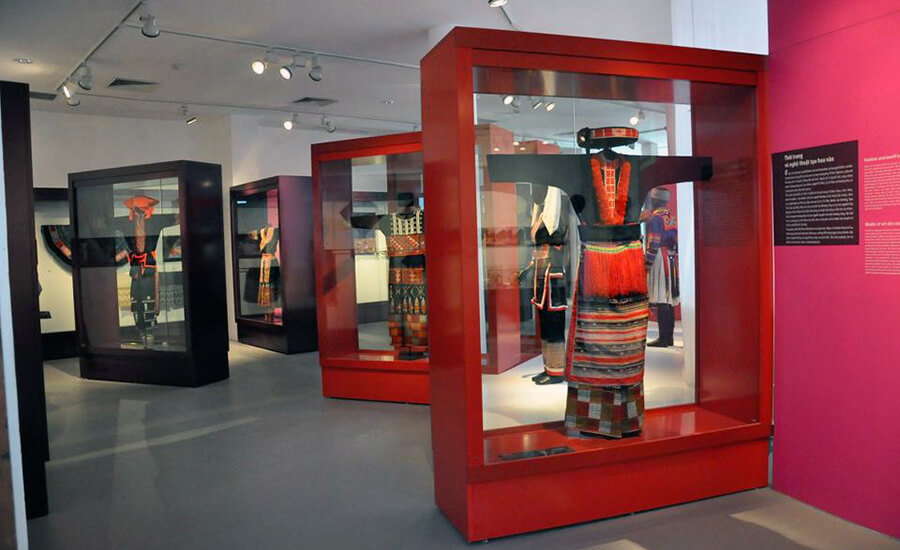
By displaying a corresponding jewelry collection featuring; hairpin’s necklaces, earrings, bracelets, silver belts, and woven accessories you can quickly learn of the joy in which Vietnamese women express their femininity and hundreds of years of family tradition.

In particular, you can identify whether a woman is married or not through the characteristics of her clothing.
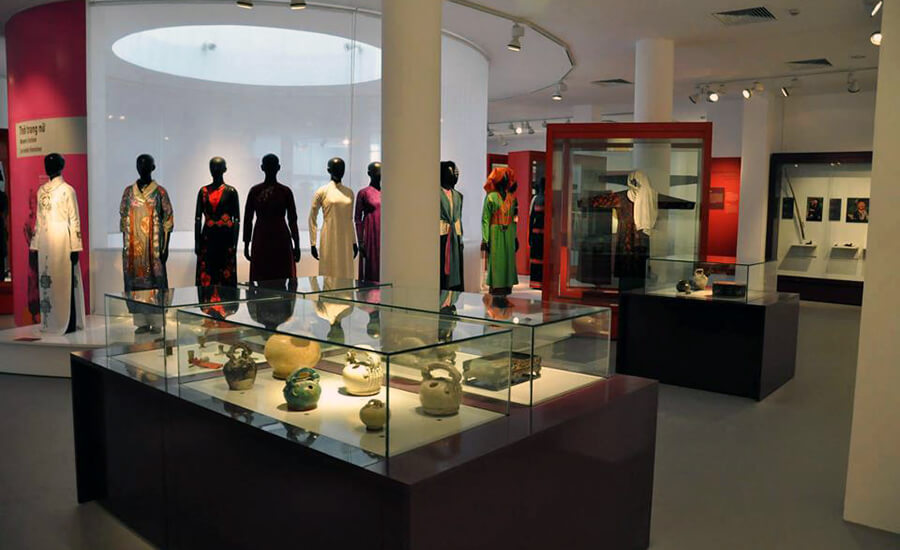
In addition, a variety of ao dai designs from many historical periods to modern times are displayed here, recreating the custom of dyeing teeth black – a tradition of ancient Vietnamese women. There is also an area where you can try the traditional scarf wrapping experience.
Other attractive services and amenities at the museum
After the tour, you can take a break and enjoy a cup of coffee at the restaurant located right on the museum grounds.

This is a green, large and quiet space offering a variety of drinks and snacks. In addition, the restaurant also offers many other amenities such as free wifi, storage area, restrooms for disabled people along with wheelchair service to serve visitors.
Source: collected by An
Follow us for the best deal with Vietnam package tours and visa services!


